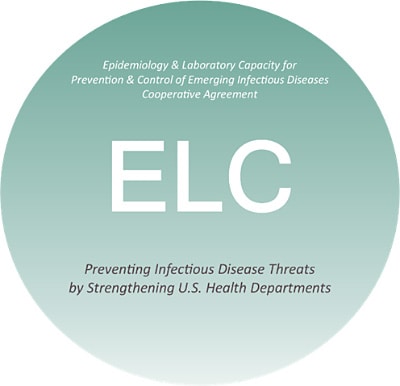Building Public Health Capacity for Harmful Algal Blooms
Harmful algal blooms (HABs) are a One Health issue that impacts the health of people, animals, and our shared environment. For this reason, preventing and responding to HAB events and HAB-associated illnesses require interdisciplinary collaboration between CDC and fellow human health, animal health, and environmental health partners. CDC works with federal, state, local, and territorial partners to reduce the health impact of HABs. Key CDC efforts to build public health capacity for HABs include the Epidemiology and Laboratory Capacity (ELC) Cooperative Agreement funding and the One Health HAB Community of Practice (CoP).

CDC provides financial support and technical assistance to state, local, and territorial health departments annually through the Epidemiology and Laboratory Capacity (ELC) Cooperative Agreement. As part of the ELC program, CDC supports public health surveillance, response, and mitigation of HAB-associated illnesses. During 2019–2023, CDC awarded over 4.8 million dollars to selected state health departments to support ongoing HAB activities. This funding helps recipients:
- Improve surveillance, response, and reporting of HABs and HAB-associated human and animal illness.
- Implement public health interventions and tools to prevent HAB-associated illness.
In 2023, the following 16 states received ELC funding for HABs:
- Colorado
- Florida
- Idaho
- Michigan
- Minnesota
- North Carolina
- New Hampshire
- Nevada
- Ohio
- Oregon
- Pennsylvania
- Tennessee
- Utah
- Washington
- Wisconsin
- Wyoming
States Receiving ELC Support For Harmful Algal Bloom Activities, 2023

CDC has also supported state waterborne disease surveillance, which included HAB-associated illnesses and outbreaks, as part of the Great Lakes Restoration Initiative (GLRI). During 2013–2019, CDC provided staffing support to states through the Council of State and Territorial Epidemiologists and financial support through ELC. To learn more about CDC’s work with the GLRI, visit CDC at Work.
CDC coordinates the One Health HAB CoP to increase communication and collaboration among state and federal partners with interest in public health activities related to HABs. The One Health HAB CoP meets regularly to share knowledge and activities related to surveillance, response, and mitigation of HAB-associated illnesses. The CoP provides an informal platform for professionals to connect and helps CDC and other CoP participants:
- Define regional and national needs related to surveillance, response, and public health mitigation of HABs.
- Inform federal public health priorities related to HABs.
- Share and solicit expertise, including useful resources, to address ongoing or new challenges related to HABs.
One Health Harmful Algal Bloom Community of Practice, August 2023

CDC partners work to protect people and animals from health threats associated with HABs. Success stories highlight the collaborative work that ELC-funded partners are doing to help prevent and respond to HAB-associated illnesses.